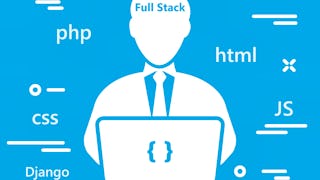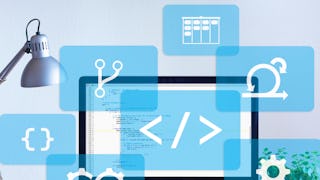This is the final course in the IBM Backend Development Professional Certificate. This capstone project course will give you the chance to practice the work that back-end developers do in real life when working with applications.

Enjoy unlimited growth with a year of Coursera Plus for $199 (regularly $399). Save now.

Back-end Application Development Capstone Project
This course is part of IBM Back-End Development Professional Certificate

Instructor: IBM Skills Network Team
6,214 already enrolled
Included with
(40 reviews)
What you'll learn
Demonstrate proficiency to develop and deploy backend services and applications
Apply your back-end development skills to author microservices and REST APIs in Flask
Create and query databases like MongoDB and integrate with Django apps
Containerize microservices using Docker and deploy using Kubernetes, OpenShift and serverless
Skills you'll gain
Details to know

Add to your LinkedIn profile
11 assignments
See how employees at top companies are mastering in-demand skills

Build your Cloud Computing expertise
- Learn new concepts from industry experts
- Gain a foundational understanding of a subject or tool
- Develop job-relevant skills with hands-on projects
- Earn a shareable career certificate from IBM

There are 5 modules in this course
In the first module, you will learn about Flask, a lightweight python-based web application framework. The module will teach you how to create a Flask application that responds to user requests at specific URLs. You will also learn about handling both server and user errors. You will learn how to make external API calls from Flask. You will apply these lessons to create a service that produces pictures from past events.
What's included
6 videos4 readings3 assignments3 app items
With the advent of Big Data and agile development methodologies, the database landscape has evolved with NoSQL databases gaining more importance and relevance. The main benefit of using NoSQL databases is the ability to effectively handle scalability and flexibility issues presented by the latest complex applications. In this second module, you will learn various flavors of NoSQL database products and practice using them in multiple hand-on labs throughout the course. You will start by learning the history and the basics of NoSQL databases and discover their key characteristics and benefits. Then you will learn about the four NoSQL databases and how they differ from each other. You will further learn how to work with MongoDB shell. You will then get hands-on experience using MongoDB basic commands, querying, and connecting from Flask. You will create the songs microservice using MongoDB and Flask.
What's included
6 videos3 readings3 assignments4 app items1 plugin
In the third module, you will get hands-on practice creating a Django application and connecting it to services. You will be asked to create a data model and use the Django migration tool to create the tables and relationships. You will then create controllers to implement business logic to send the appropriate data to the provided templates.
What's included
1 reading2 assignments1 app item
In Module 4, you will deploy your application and services using Code Engine, OpenShift, and Kubernetes. You will first learn about IBM Cloud code engine and how it helps in deployment of your applications. You will create a DockerFile for the Pictures and deploy it to IBM code engine. You will create a second DockerFile for the Songs microservice and deploy it to an OpenShift cluster. You will learn how to push the docker images for the microservices to IBM Container Registry. Finally, you will deploy the main application to IBM Kubernetes Service using YAML deployment files.
What's included
1 video2 readings3 assignments4 app items1 plugin
In the final module, you will need to submit the screenshots from the hands-on labs for peers to review. You will also need to provide URLs for the microservices and the Django application. In addition, you may be asked to submit GitHub repo links to enable peers to review your code. After you submit your project, you will need to review and grade one of your peer’s submissions.
What's included
2 readings1 peer review
Earn a career certificate
Add this credential to your LinkedIn profile, resume, or CV. Share it on social media and in your performance review.
Instructor

Offered by
Explore more from Cloud Computing
 Status: Free Trial
Status: Free Trial Status: Free Trial
Status: Free Trial Status: Free Trial
Status: Free Trial Status: Free Trial
Status: Free Trial
Why people choose Coursera for their career




Learner reviews
40 reviews
- 5 stars
95.23%
- 4 stars
4.76%
- 3 stars
0%
- 2 stars
0%
- 1 star
0%
Showing 3 of 40
Reviewed on Mar 13, 2024
I directly applied the concepts and skills I learned from my courses to an exciting new project at work!
Frequently asked questions
To access the course materials, assignments and to earn a Certificate, you will need to purchase the Certificate experience when you enroll in a course. You can try a Free Trial instead, or apply for Financial Aid. The course may offer 'Full Course, No Certificate' instead. This option lets you see all course materials, submit required assessments, and get a final grade. This also means that you will not be able to purchase a Certificate experience.
When you enroll in the course, you get access to all of the courses in the Certificate, and you earn a certificate when you complete the work. Your electronic Certificate will be added to your Accomplishments page - from there, you can print your Certificate or add it to your LinkedIn profile.
More questions
Financial aid available,





